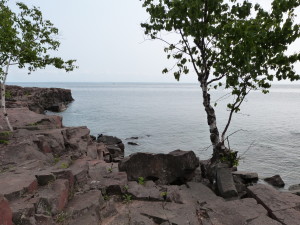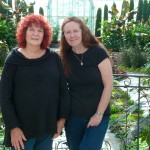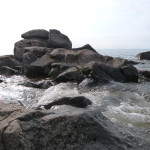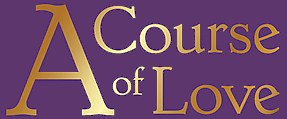 I asked myself the other day if the questions I’ve been exploring about my life couldn’t be more pleasurable than they’ve been. Yet as I thought of sharing this feeling, I realized it relates to my feelings of being in transition, and that I’m always writing of transition! I need to get off this subject, is what I thought. But then, for the first time, I realized, What the heck. We are all in transition from the minute we walk through the door of this course. We are in transition from fear to love, from separation to union, from intolerance to acceptance, from learning to no longer learning, from old life to new, from one life situation to another and on and on. When we add details it can look different for each of us, but without the details, it’s simply the way it is.
I asked myself the other day if the questions I’ve been exploring about my life couldn’t be more pleasurable than they’ve been. Yet as I thought of sharing this feeling, I realized it relates to my feelings of being in transition, and that I’m always writing of transition! I need to get off this subject, is what I thought. But then, for the first time, I realized, What the heck. We are all in transition from the minute we walk through the door of this course. We are in transition from fear to love, from separation to union, from intolerance to acceptance, from learning to no longer learning, from old life to new, from one life situation to another and on and on. When we add details it can look different for each of us, but without the details, it’s simply the way it is.
I’d just ordered and read a bit of what was available on-line of Brené Brown’s new book, “Rising Strong” where she coins a new word: badassery. She explains it this way: “When I see someone fall down, get back up and say, “Damn, that really hurt, but this is important to me and I’m going in again” –my gut reaction is, “What a badass.”” Then she says, “There are too many people today who, instead of feeling hurt are acting out their hurt; who instead of acknowledging pain, they’re inflicting pain on others. Rather than risking feeling disappointed, they’re choosing to live disappointed.” She says, “Perfectionism is about the furthest thing in the world from badassery.”
I found myself wanting to be a badass. A wholehearted badass. Brene’s been talking about being wholehearted for almost as long as I have.
Since I’m still waiting for my copy of “Rising Strong” to arrive, this is as far as I’ve read. I’m sure she talks about what happens when we’re feeling in a dark place because that’s her impetus for writing the book. Not the heroes glorious hour of success, but what gets the heroine up out of the place of what I’ve been calling “not knowing what to do” . . . to “knowing what to do.” These are my words, not Brené’s. The times of “not knowing what to do” that I encounter are the toughest times for me. I do not rush. I wait it out. But then I do get to these points of “enough is enough.”
I was talking to one of my friends and mentors, Kathy Scott Perry, the other day. She’s been running conferences for decades and invited my participation in the one subtitled, “A gathering of the scribes,” a few years ago. She told me that scribes often seem not to know what to do when they’re done scribing! I could have kissed her for saying that.
other day. She’s been running conferences for decades and invited my participation in the one subtitled, “A gathering of the scribes,” a few years ago. She told me that scribes often seem not to know what to do when they’re done scribing! I could have kissed her for saying that.
You’d think it would be the opposite, wouldn’t you? That there’d be some kind of “this is what you do next” instruction? I did get guidance: “Be a companion to those willing to leave hell behind.” I totally accept being a companion—it’s perfect for me. I totally accept that it makes little sense to try to companion anyone unwilling. And so, okay, there’s guidance. But the need to put whatever guidance we get together into a whole that actually guides our lives is a tad more complex. Because while I’m doing whatever I’m guided to do, I still have to consider that the strongest call of this Course: “being who we are,” translates for me, (as for you) into being who “I” am.
So my questions to myself from within these constant times of transition are ones that aren’t only “what’s the way forward” but what’s the way to move forward soulfully, wholeheartedly, with authenticity (or badassery) and without walking away or walking over anyone else?
 These are among the greatest dilemmas of life, and each of us meet these “not knowing what to do or how to move forward” challenges—if not constantly, occasionally. I started wondering where this is addressed adequately in A Course of Love, and landed on Chapter 17 of The Dialogues, the one in which we are told we are still becoming, but that we stand at the threshold. Reviewing this chapter let me see that I could reframe my language of transition into the language of desire and response:
These are among the greatest dilemmas of life, and each of us meet these “not knowing what to do or how to move forward” challenges—if not constantly, occasionally. I started wondering where this is addressed adequately in A Course of Love, and landed on Chapter 17 of The Dialogues, the one in which we are told we are still becoming, but that we stand at the threshold. Reviewing this chapter let me see that I could reframe my language of transition into the language of desire and response:
“Desire asks for a response. From where is this response sought? You now must understand the fullness of the well of your heart, the interrelationship of desire and fulfillment.” (D:17.19) The interrelationship of desire and fulfillment. I love that! To me it is like hearing, The strength of your desire is the fuel for your movement.  Your answers will come from your own heart in response to your desire.
Your answers will come from your own heart in response to your desire.
Next we’re told that we will spend forty days and forty nights on the mountain, “fasting from want, becoming aware of desire, responding to desire. This is the final stage of becoming.”
Responding to desire. Yearning for that time of such a response rising up! Yes! This is a description of the feeling of transition.
I long to respond with true expression. I greatly desire to enjoy the freedom of the new. And I especially yearn for the freedom of being my true Self. And I stand in desire and fulfillment, to which part of me says, Whatever that means! And to which another part of me says . . . How true!
How about you?


Mary, Yippee Skippee! There can’t be too many badasses out there! I really appreciate hearing from you and that you get where I’m coming from and have felt the What Now. Maybe it’s different for each of us (and yet oddly the same). I’ve had a number of off-post communications regarding this that say very similar things to what you ended with–that there’s something there in that “call” that touches them too. Discovery, exploration, creation. ..these words do affect me, call to me. But I like the simple badass language too! It’s like it’s more down-to-earth, and sometimes I need that.
Mari, I join you in Being in badasstery! Often since experiencing ACOL, I’ve said, ok now what! I can only imagine your now what!
There’s so much to unlearn or remember that when I find myself willing to move forward to incorporate the levels it’s as if I’m the only one. Yet I know I’m not alone. Seriously once the shock of holy carp wore off, the next thing was what now! I’m still going through what now, but with much less indignation.
I do feel transformation ends and discovery takes over. Probably without realization. PerhAps when my expectations of a particular demarcation from transformation occurs, it becomes complete. Who knows.
Thanks for your post. It touches something g within me
I like the idea of being a spiritual badass – Just feel it and go forward with that and not overthink what it might mean or do to someone. Let the feelings guide me. I can always continue to learn and do better each time. But overthinking just delays learning being complete. Love to all… Rose
Jacques, Thank you for sharing how it is for you. Isn’t it wonderful that we individuate in union and relationship? That each of us can be who we are? Many of us exist in some creative tension for one reason or another. Perhaps for me it is for having a specific function to fulfill with this Course, but I feel that it is combined with a call to create the new and to express as who I am being. I share “where I am” because I know many feel as I do. Many also share your way of being. All these expressions are needed.
What a great place to be with you guys here! And, Mari, what an honest words… One might think that an author of ACOL surely should know all the answers! 🙂 I am going through ACOL and ACIM simultaneously and they go so well together… But it is ACOL that actually gives me that specific, actual edge, that know how. Times and time again it addresses inner turmoil in such a perfect timing!
One thought that came to mind as I read, Mari, about the badassery and what you said specifically about wanting to know the way. Curiosity is an attribute of the mind but knowing – of the Self. Whenever I relate to the mind I feel like it is a never ending story – what is next, how is next, when is next and so on. But then my inner Self calls me to relate to Knowing. And right there I know, that I am exactly where I am supposed to be and I do exactly what I am supposed to do. Why? Because I am here. And If I am here it means that God is here. And this Knowing calms my mind. I will get to where I need to be because I am already here, and God is here.
Hope it makes some sense. English is my second language..
Love you very much and thank you for the badass you became! 😉
Paulius, You did a wonderful job with your English, and are so vibrant and kind. Thank you for calling me a badass!
It is always a little risky to share my feelings, but I do so because this Course is so much about feelings! I have at times used practices to circumvent feelings, but have found it doesn’t serve me. I have seen that I need to feel and accept whatever is going on within me before I am moved to knowing or peace. And that’s okay with me. I don’t find desire and yearning to be particularly peaceful, but this post is a perfect example of how expressing myself leads me to what I’m “really” feeling. Thankfully, Jesus accepts the passion of “my” inner self.
Thank you for sharing how your inner self calls “you” to knowing. You make lovely sense.
Thank you dear Mari for bringing this important subject up. Here is where I feel and Know that I stand not only in this moment but at this time. I’ve been in this transition process for very long. I truly feel that I do not belong there any more.
Do I always feel out of doubts about where I am? This may sound like a side step, but I found that to ask myself this question is almost like not wanting to come out of this doubting process. Faith led me to trust. I trust.
HE Knows. Do I have to Know or is it no enough to Know that He knows and that We are One? I truly Know that I’m accomplished.
Love,
Kathy, Your comment is so true, and true for all of us. When we’re true to ourselves, we are doing it for everyone. Of course, each of us carry the desire to be true to ourselves. It’s just that this isn’t always clear, especially in times of, you guessed it–transitions! It brings home the idea of accepting ourselves as we are in the moment, since such immense change and growth–that I for one wouldn’t have any other way–are going on all the time. As I told you, I’ve been noticing this acceptance move through me. It starts, I must admit, in my head. It’s somewhat easy to accept things in this way. But then it begins to move down–into my heart and into my body. Feeling this … process, is new to me. I know you’ve said you have bodily reactions when you know something to be “right” or true, or conversely not right or true. It’s all so fascinating and often so tender! Thank you so much for sharing your realization.
Your blog entry today covers so much of what I have been thinking about lately. When I got to the sentence,
“And I especially yearn for the freedom of being my true Self.” I got a sudden realization that when you are true to yourself, you are doing it for everyone else as well, we are all one. And maybe it is a way to be a companion to those who are willing to leave hell behind. Thank you for your wise words, and food for thought!